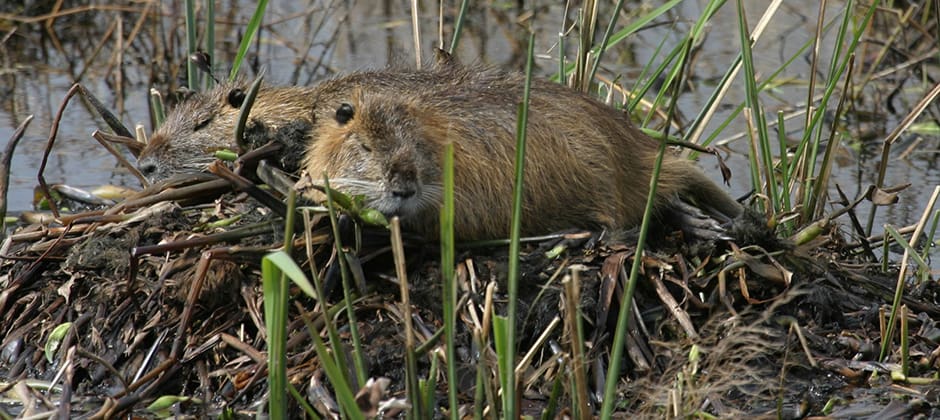Share this article
USFWS declares victory over Nutria in Maryland
For over 20 years, wildlife managers have worked to remove nutria from the Chesapeake Bay area of Maryland. Now, officials say they have succeeded in removing the invasive rodent from the state.
“This project is a powerful case study for how federal and state agencies can work closely together to achieve a shared goal that benefits the environment and the community,” said U.S. Fish and Wildlife Service Director Martha Williams, who delivered remarks at an event at Blackwater National Wildlife Refuge last week to announce the achievement.
Nutria were introduced to the Delmarva Peninsula in Maryland from South America in the 1940s for the fur market. Since then, their feeding habits have decimated thousands of acres of marshes, accelerated by the impacts of sea-level rise. Blackwater National Wildlife Refuge lost more than 5,000 acres of wetlands through a combination of nutria impacts, sea-level rise and land subsidence.
The Chesapeake Bay Nutria Eradication Project was undertaken by the USFWS, USDA Wildlife Services and the Maryland Department of Natural Resources, with participation from over 700 landowners on the Delmarva Peninsula. Managers used a variety of techniques, including detection dogs, which detected nutria scat across the landscape.
The last known Maryland nutria was captured in May 2015. Since then, managers have used monitoring and modeling to watch for additional nutria, and they have stepped up efforts to keep nutria in Virginia from reinfesting neighboring Maryland.
“After years of hard work and partnership, we have proven that eradication of this invasive species is possible,” said Maryland DNR Secretary Jeannie Haddaway-Riccio.
Header Image: Invasive nutria can devastate wetlands. After more than 20 years, managers believe they have eradicated the species from Maryland. Credit: Steve Hillebrand/USFWS








